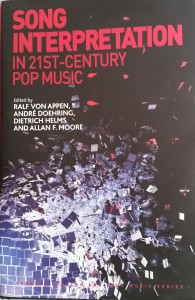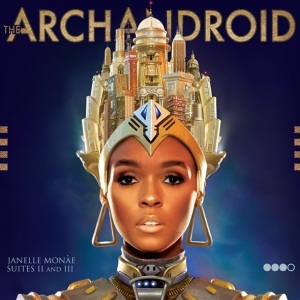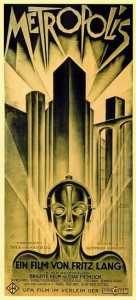
After long last the first text of mine has been published and that got me to break the silence on the blog here. As a co-author of one of the articles in this collection I’m not going to the review the book here but to provide some insights into how the book came to be.
Song interpretation in 21st century popular music is a result of a week-long workshop on new methods to analyse popular music under the title ASPM International Postgraduate “Methods of Popular Music Analysis” Summer School. The workshop took place in Osnabrück, Germany in September 2011 and brought together a group of young scholars to explore and experiment on methodologies that would best suit analysing contemporary popular music. This endeavour was guided by a group of guest lecturers (see end of the post) – or “professors” as we called them. Each of them also contributed a chapter to the book.
The book aims at putting the (whole) song first instead of using fractions of songs to exemplify a theory or support an argument. The editorial choice of separating the contributions of the guest lecturers (“Listening alone”) from the group efforts of the workshop participants (“Listening together”), however, points to another one. While collaborations are not out of the ordinary in music studies, or humanities in general, single authorship still remains the norm. In this book the guest lecturers first introduce and apply their methodological toolbox of which the workshop participants then draw in their subsequent group efforts.
Group working has its challenges, especially when people who have never met and come from different cultural and scholarly backgrounds are thrown together and are expected to produce something in a short time. Some of the groups indeed had some difficulties on the way but I was very lucky to find myself in a group of like-minded young scholars in different points of their careers. Our group dynamics worked well and our interests and areas of expertise complemented each other.
The setup of the workshop was, in my opinion, a very successful one. The guest lecturers were each concentrating on sharing their expert knowledge about certain aspects of music or music-making (e.g. rhythm, harmony, music production) as well as their specific methodological tools. Each day of the workshop the groups were joined by one of the professors to help us fine-tune our ideas about the song we were analysing and point out things we missed.
Listening together Janelle Monáe’s “Tightrope”
Next I would like to share with you something of my experience participating in the workshop and analysing a song in a group. The whole workshop had about 30 participants and they were divided to groups of 5-6 people based on their musical interests. Each group were then given a song in their preferred genre to analyse.
My group (see the end of the post for more) was “r&b” and we were assigned Janelle Monáe’s “Tightrope” (The ArchAndroid 2010) to analyse. Our group consisted of two American and four European scholars with specialities varying from music theory to literary studies. My own contributions came mainly from contextualising our study in terms of African American musical and cultural discourse, especially regarding interpretative strategies.
What we did first was to give everyone some time to get acquainted with the song – which for most of us was a new one – and get some first impressions based on our individual encounters with the song. At this point I’d recommend you to listen to the song before reading more about our findings. Below is the official video of the song but I’d recommend you to first listen to the song without watching the video to get your first impressions without the storyline of the video.
The first impression most of us had with the song was that it’s full of references to other African American musical genres and styles, most notably funk and James Brown’s funk specifically. Such stylistic references became the core of our analysis as we proceeded to find “meaning in/of” the song. In addition to formal and textual analysis we also studied productional aspects and their contributions to creating – or rather suggesting – meanings. Rather just analysing the music and lyrics we also studied the above video as well as some live performances of the song to “test” our interpretations. For instance the stylistic references to James Brown were “confirmed” by Monáe’s stage performance as she gets the James Brown signature cape laid over her shoulders. Also aspects of her fashion and dance moves support the argument that these references are intentional homage to the past artist – although by no means only that.
Within our group we also had lengthy discussions about meaning in/of music in general and questioned our own (and each others’) claims and arguments. There were some in the group who were less interested in find meanings in music but still interested in musical analysis. However, most of us thought that analysis should have a purpose and we came to agree that the song and its performances, as discussed above, can be viewed as suggesting many possible interpretations – ways of hearing the song.
In our article we present some interpretations and aim to show that these are open-ended ones, i.e. we don’t attempt to tell you “what this song means” but suggest some possible ways to interpret the song. “Tightrope” Signifies in the sense the black literary scholar Henry Louis Gates Jr.’s has described as “start[ing] the chain of signifiers”; instead of pointing at a “signified” such as James Brown and his style of music and performance the song, and Monáe’s performance of it, draw from a broad scope of musical heritage – not only Black music but also e.g. film music and popular music in a broader sense – to make a personal statement about coping with fame (using tightrope as a metaphor for its pressures). The “message” of the song is, however, open to other interpretations as well and the official video presents one such proposing the “tightrope” as a metaphor for sanity or personal integrity. Simultaneously it’s also a cultural reference and a tribute to past musical heroes Charlie Parker and Jimi Hendrix who also stayed in the “Palace of the Dogs” where this video takes place.
The video also points to the storyline of the album the song comes from. ArchAndroid is the first album of a “Chase Suit” trilogy telling a story of an android sent back in time to free the society of tyranny. The storyline mirrors Fritz Lang’s classic film Metropolis (1927) to which the album cover also refers to. The theme and performance style draw also from the Afro futurism of the 1970s.


In the article we point at many more significations e.g. in the song’s melody, rhythm, harmony, instrumentation and production to suggest “chains of signifiers” – or ways of hearing the song.
Much more could be said about our article and the workshop in general but I’ll leave it at here for now. However, I would like to take this opportunity to thank once more Frederike Arns, Mark Chilla, Esa Lilja, Theresa Maierhofer-Lischka and Matthew Valnes for the great work during the workshop as well as after it finalising the article. I wish you the best of luck in your careers! I’m also grateful to Ralf van Appen, André Doehring, Dietrich Helms and ASPM for organising this workshop and editing the book as well as the guest lecturers Allan F. Moore (also editor of the book), Simon Zagorski-Thomas, Anne Danielsen and Walter Everett for sharing their vast knowledge and inspiring us on our efforts.
Cheers, Mikko




